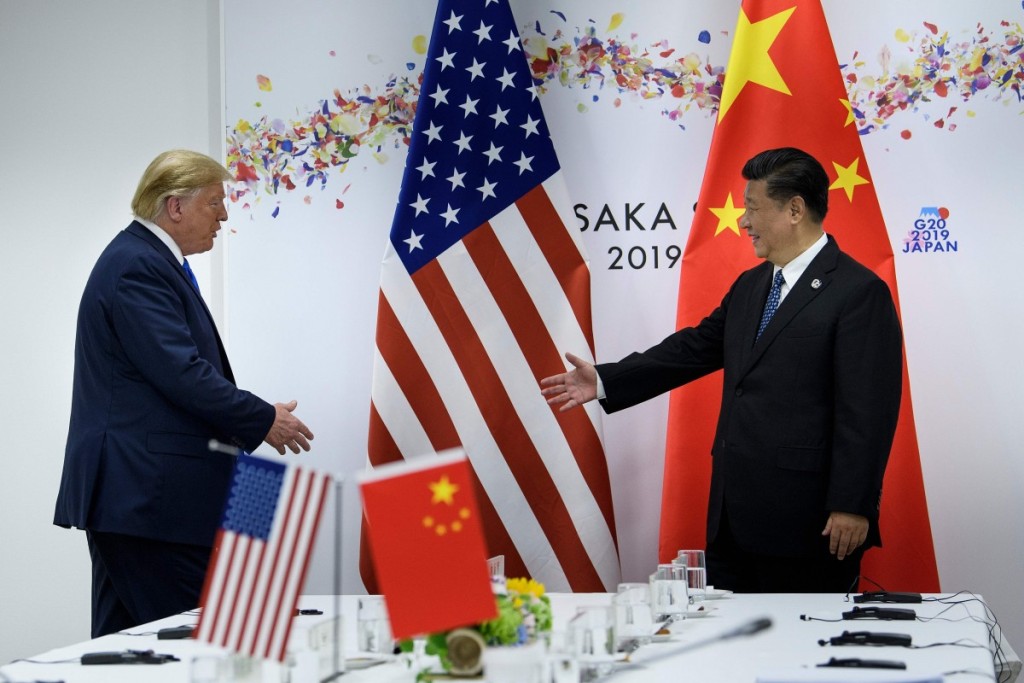Finally, after more than 18 months of trade conflict, America and China signed the preliminary trade deal. President Donald Trump set the scene in the White House, saying, “The world is watching today, it’s a great honour to be here.” Then he shook hands with Vice-Premier Liu He, the deal was done.
According to Trump, he has fulfilled another electoral pledge by renegotiating the trade deal with China. Unlike the other nations, Trump promised he would renegotiate trade deals with, with China Trump started a trade war where he increased tariffs on China’s imports into the US. Two years of the trade negotiations have been marked by multiple rounds of talks, truces and tariff escalations: the US and China agreed in October 2019 to a phase-one trade deal. After two days of talks that ended 11th October 2019, between US President Donald Trump and Vice Premier Liu He, China’s chief negotiator, the White House delayed its planned October 2019 tariff increase on $250 billion of Chinese goods. The deal committed China to buying $40 billion to $50 billion in American agricultural goods, enacting some intellectual property protections and currency measures, and taking additional steps to open its financial sector to foreign investors. By the end of 2019 this deal had still not been signed and especially when Trump criticised China for its response in Hong Kong.
But despite this Trump agreed to a phase one trade deal which has left most issues still to be negotiated. In fact on the major issues nothing has been agreed yet. Issues from China halting subsidies to its state owned enterprises (SoE), reducing America’s trade deficit and China opening its economy to US investment, none of these core issues have been resolved are even discussed. The trade with China is not as simple as Trump imagined. Whilst Japan, South Korea, Germany and Canada were easy to bully and push towards a deal to the benefit of the US, China has not been so straightforward.
On the US side, experts predicted a good 2% to 2.5% growth in the US economy in 2019. However, if the trade war continues to escalate, which seems inevitable, it might inflict a powerful shock to the American economy, who although not dependent on exports, it is dependent on consumption within its economy. For the first time in nearly eleven years, the Federal Reserve cut interest rates in an attempt to lower the odds of a recession. A day later, Trump again raised the odds for a recession by announcing tariffs on $300 billion worth of US imports from China, targeting consumer goods. Kristina Hooper, chief global market strategist at Invesco said, “It could be incredibly damaging to the global economy. The risk of a recession has gone up because of the ratcheting up of the trade war.”
The trade war is really one aspect of the battle between the US, the underlying issue is China’s rising role in the world. For the US, China possess a challenge in Eurasia and especially in South East Asia. As the global hegemon, the US doesn’t not want to share any of the world’s region with anyone and doesn’t also see another power as part of the equation. The US has used political actions such as containing China, militray actions such as sending its aircraft carriers into Chinese waters. When Trump took office, he began using economic tools such as trade tariffs and trade talks to deal with the rise of China.
The US is currently attempting sever restrictions on the development of new tech and this is why we have seen Huawei banned in the US and much pressure from the US against its European allies to keep the Chinese company out. China is a global leader in future tech such as AI and 5G networks. What Trump has done for the moment is secure phase one of this trade war, he is already speaking about negotiating phase two, which shows there is still a long way to go for this trade war.
Adnan Khan

